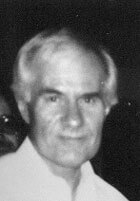Attorney for Richard Rogers challenges fingerprint evidence as well as NJ venue
Rogers is charged with two counts of murder and two counts of hindering apprehension in the 1992 killing of Thomas Mulcahy and the 1993 killing of Anthony Marrero. Both men had been dismembered and their body parts were found in New Jersey.
In a January 20 motion, David A. Ruhnke, Rogers’ attorney, asserted that the Ocean County prosecutor’s theory was that the murders were committed on Staten Island, where Rogers lived, and that under New Jersey law the state may only prosecute murders if “either the death of the victim or the bodily impact causing death” took place in New Jersey.
Ruhnke is also challenging fingerprint evidence in the case. Police found 16 fingerprints from nine of Rogers’ fingers on the plastic bags that held Mulcahy’s body parts and two fingerprints and a palm print belonging to Rogers on two bags that held Marrero’s body parts, according to a motion filed by the prosecution.
In the past, defense attorneys have had some success in questioning the reliability of fingerprint evidence and, more importantly, the skills of fingerprint examiners.
“A lot of fingerprint science comes down to a fingerprint examiner saying ‘I know it when I see it,’” Ruhnke said. “It has had the gloss of science for a long time and now people are starting to question it.”
The fingerprints in the Rogers case were found when police processed the plastic bags in a vacuum metal deposition chamber, a machine that uses metal vapors to find fingerprints on smooth or non-porous materials.
Whether a fingerprint taken from a plastic bag by this method can effectively be compared to a fingerprint taken at someone’s arrest that was carefully rolled onto a piece of paper is something Ruhnke might challenge. The defense has asked for a hearing on the jurisdiction issue and fingerprint evidence.
“All I’m looking for at this point is to get out of the prosecution more information about how they got the fingerprints they used to identify Richard,” Ruhnke said. The defense attorney said that Rogers continues to say he had nothing to do with the killings.
“Richard has always denied any involvement in any of these murders and they are trying to link him to several,” Ruhnke said.
Also on January 20, the prosecution sought to introduce evidence at his trial of other crimes they believe Rogers committed and one for which he was found not guilty.

“Admission of the evidence is necessary to give the jury a more complete picture of the defendant and his modus operandi,” the Ocean County prosecutor wrote in a motion.
Prosecutors want to introduce details of the 1991 killing of Peter S. Anderson whose dismembered body was found in Pennsylvania, the 1993 killing of Michael Sakara whose dismembered body was found in upstate New York, and the 1982 killing of Matthew John Pierro in Florida.
Police found 18 fingerprints from eight of Rogers’ fingers on the plastic bags that held Anderson’s body parts.
While they have no “fingerprints or other forensic evidence” tying Rogers to the Sakara killing, three witnesses, including one who knew both men, told police that they saw the two men together either on the night Sakara disappeared or in the three months prior to his disappearance.
There are some other similarities among the four homicides such as ligature marks on the wrists, arms or neck and the way in which the bodies were dismembered.
Unlike the other homicides, Pierro was not dismembered, but police say they have matched a bite mark on Pierro’s body to Rogers’ teeth. They have established that Rogers was in Florida when Pierro was killed. Police also have bite mark evidence in the Mulcahy case.
Ruhnke said that such evidence was questionable.
“That is just classic junk science,” he said. “That’s going to come up down the road.”
Police have established that latex gloves found with Mulcahy’s remains were purchased at a CVS Pharmacy on Staten Island and carpet fiber found with his remains is similar to carpet fiber found in Rogers’ home.
Rogers has not been charged in any state with the Anderson, Pierro, or Sakara killings.

The Ocean County prosecutor wants to introduce evidence from a 1988 case in which Rogers was charged with assaulting and falsely imprisoning another man in his home. Rogers was acquitted in a 1990 trial.
Activists who have been following the case since the early 90s believe that Rogers is responsible for these homicides.
“We don’t necessarily have an opinion about these particular legal maneuvers,” said Clarence Patton, director of community organizing and public advocacy at the New York City Gay and Lesbian Anti-Violence Project. “We do ultimately hope that Richard Rogers is connected to and made to stand trial for all the crimes he is guilty of committing.”
center) , whose dismembered bodies were found inside garbage bags. Police are also investigating Rogers for the 1982 murder of Michael Sakara (above right).
We also publish:



































